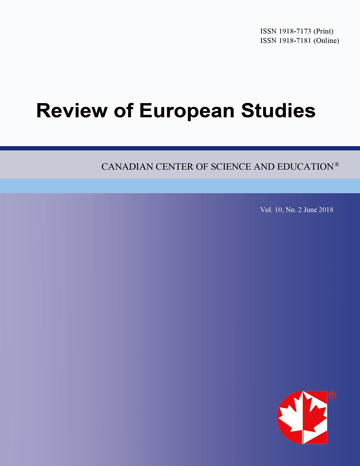Reactions against Historicism of German Bauhaus and the Reaction against “Passeism” of Italian Futurism
- Jie Chang
Abstract
Bauhaus was a school of art and architecture in Germany. It was founded at Weimar with Walter Gropius as the first director. The faculty of the school included artists as famous as Paul Klee, Lyonel Feininger, Wassily Kandinsky and Marcel Breuer. (Note 1) The early years of Bauhaus were marked by a determination to reform art education as well as to create a new society. Due to the hostility from right wing politicians and academicians, the school moved from Weimar to Dessau in 1925, and from Dessau to Berlin in 1933. The end of the school’s life was rather bitter, Nazi government forced it closed on April 11, 1933. “It was the first tangible expression of the Party’s cultural policy, of its determination to remove from Germany every trace of what it called decadent and Bolshevistic art”. (Note 2)The Bauhaus art is the art of modernization. The Bauhaus architects considered contemporary architecture as a display of “dead style”. They reacted against the theory of the historicists, whose understanding of the past was held vital to explanation of the present. In this short paper, I have addressed this reaction against historicism from the following aspects. Firstly, I have tried to understand Bauhaus architecture as an art of modernization, which is not only modern, but also functional, clean lined and economical. Secondly, I have tried to analyze the philosophy and the ideology of the Bauhaus artists as Walter Gropius and Hannes Meyer, trying to find the ideological roots of their reaction against historicism. Finally, I have turned to the aesthetic aspect of the Bauhaus architecture. Alongside my exploration of the reaction of German Bauhaus artists against historicism, I have compared it with Italian Futurism, which is famous for it strong reaction against “Passeism”. Thus, I hope I have been able to draw a clear picture of the Bauhaus movement reacting against contemporary “dead style” and “historicism”.
- Full Text:
 PDF
PDF
- DOI:10.5539/res.v2n1p91
Index
- ACNP
- CNKI Scholar
- DTU Library
- Elektronische Zeitschriftenbibliothek (EZB)
- EuroPub Database
- Excellence in Research for Australia (ERA)
- Genamics JournalSeek
- Google Scholar
- Harvard Library
- HeinOnline
- Infotrieve
- JournalTOCs
- Mir@bel
- Open policy finder
- RePEc
- ResearchGate
- ROAD
- Scilit
- Technische Informationsbibliothek (TIB)
- The Keepers Registry
- Universe Digital Library
- WorldCat
Contact
- Paige DouEditorial Assistant
- res@ccsenet.org
